First post at the new blog! ^_^
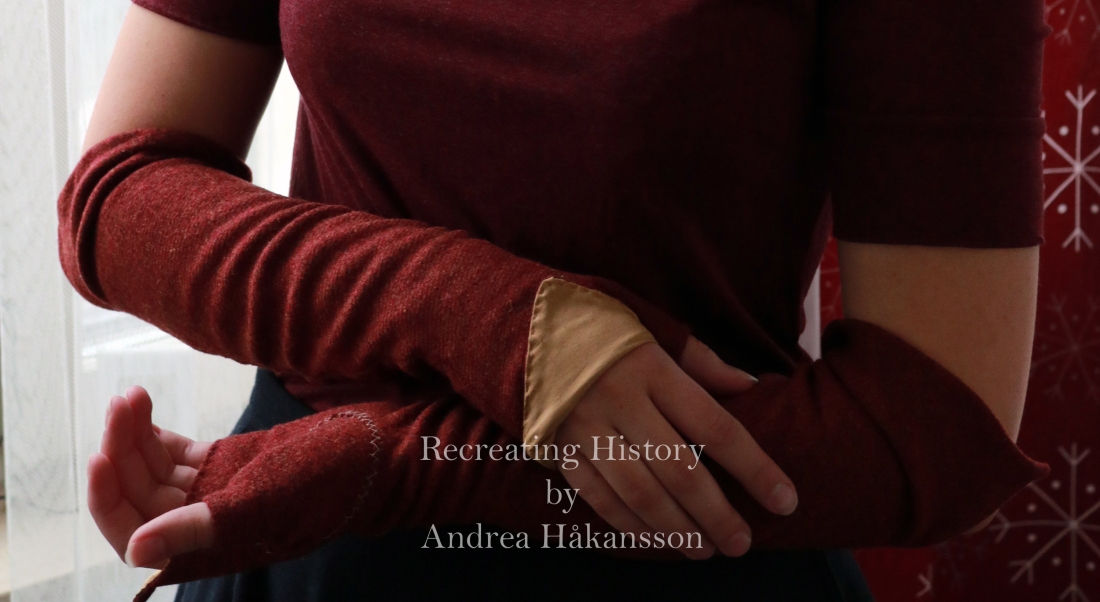
A while ago I made a pair of regency mitts. They were intended for an event last spring which I didn’t manage to attend as I went to Florence with my Chamber Music Orchestra instead. The mitts were the only thing of the ensemble that I managed to get finished, but I’m well on my way to produce the rest of the regency outfit as it is now. My goal is to attend the same event this year instead.
They are known from several regions in Europe, as well as Sweden. According to Berit Eldvik (an expert in Swedish “folk” fashion), the style is sometimes called “klaffhandskar” in Sweden, and the term is known from at least 1759 (see link in first photo below). The style is more or less the same in the Regency period, which means that the mitts are functional for a wider time-span than the intended one.
Förra året var min plan att åka på ett empir-event i Skåne, men en kammarorkesterresa till Florens kom i vägen. Jag påbörjade en ny dräkt, men kom inte längre än till ett par halvvantar. Nu hoppas jag på att kunna åka på årets version och är i full gång med min dräkt. Halvvantar i stil med mina finns i mängder, både från Sverige och Europa. Enligt Berit Eldvik kallas de ibland klaffhandskar på svenska och var en vanlig fästegåva (se länken under första bilden).
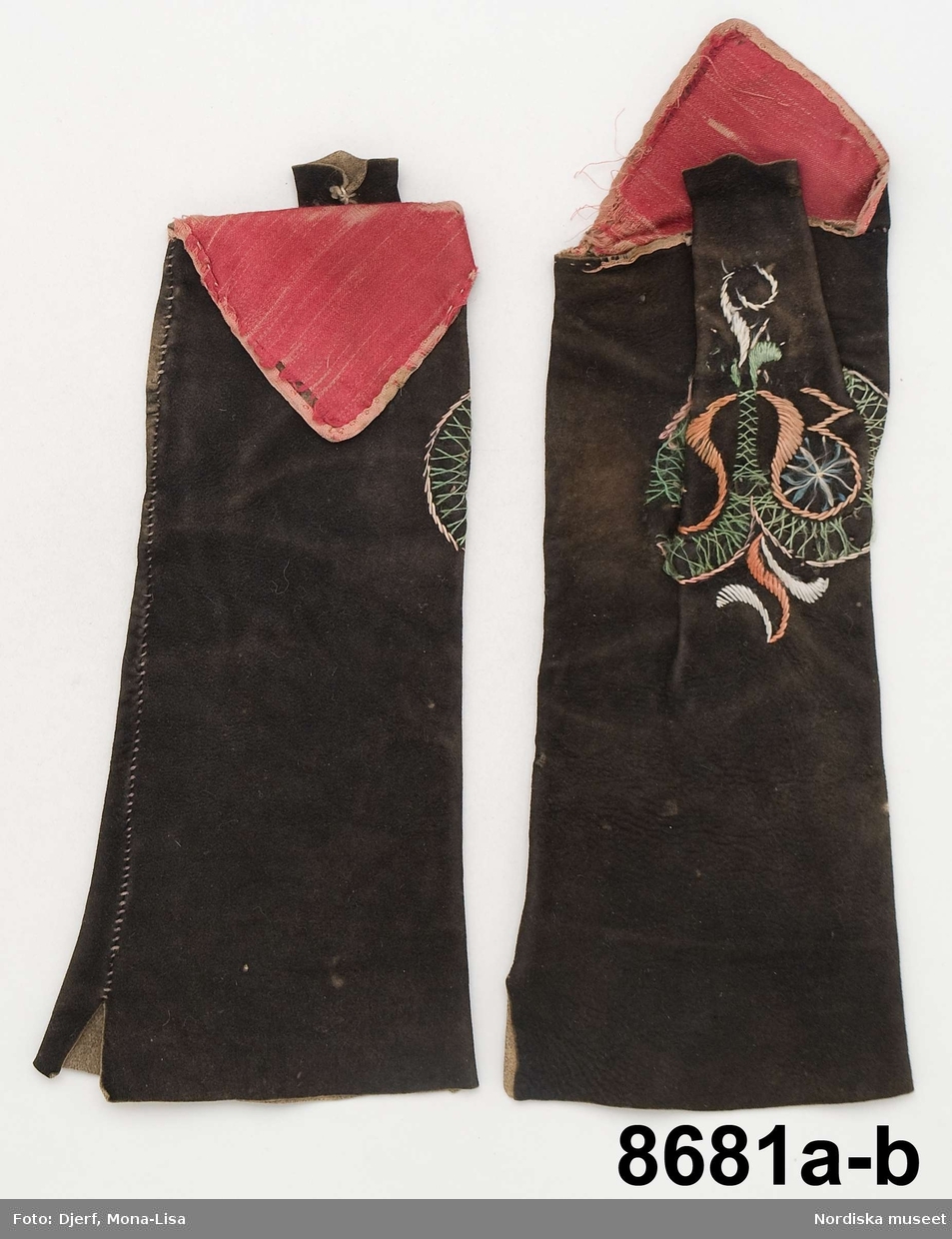


My mitts are made of a reddish-brown woolen twill, cut on the bias to fit snugly. They are stitched with a backstitch for both elasticity and duration, and the seam has then been felled to one side for extra strength. At the elbow there is a slit to accomodate for more mobility.
The thumb is attached to the mitt with an overlapping seam to reduce bulk, and is whip-stitched on the reverse side, but sewn together with a more decorative herringbone stitch on the right side. All seams discussed this far are sewn with two different kinds of waxed linen thread – an unbleached thread for the non visible seams, and a thinner, bleached thread for the herringbone stitch.
Mina halvvantar är sydda med lintråd och efterstygn i en rödbrun yllekypert. Sömmarna har sedan fällts åt ett håll. De går upp över armbågen, och just vid armbågen är det en slits. Tummen har sytts omlott med huvudtyget, från avigsidan med fållstygn och från rätsidan med en dekorativ söm av fiskbensstygn.
This mitt is made of yellow silk taffeta, with herringbone stitches. Probably French, late 18th to early 19th century, now at the Museum of Fine Arts, Boston:
http://www.mfa.org/collections/object/mitt-46546
The lining is made of a piece of gold-coloured silk taffeta. They are only lined at the very end, so the lining can be visible when you fold back the top. It is sewn with self-fabric thread and then stab-stitched to add neatness.
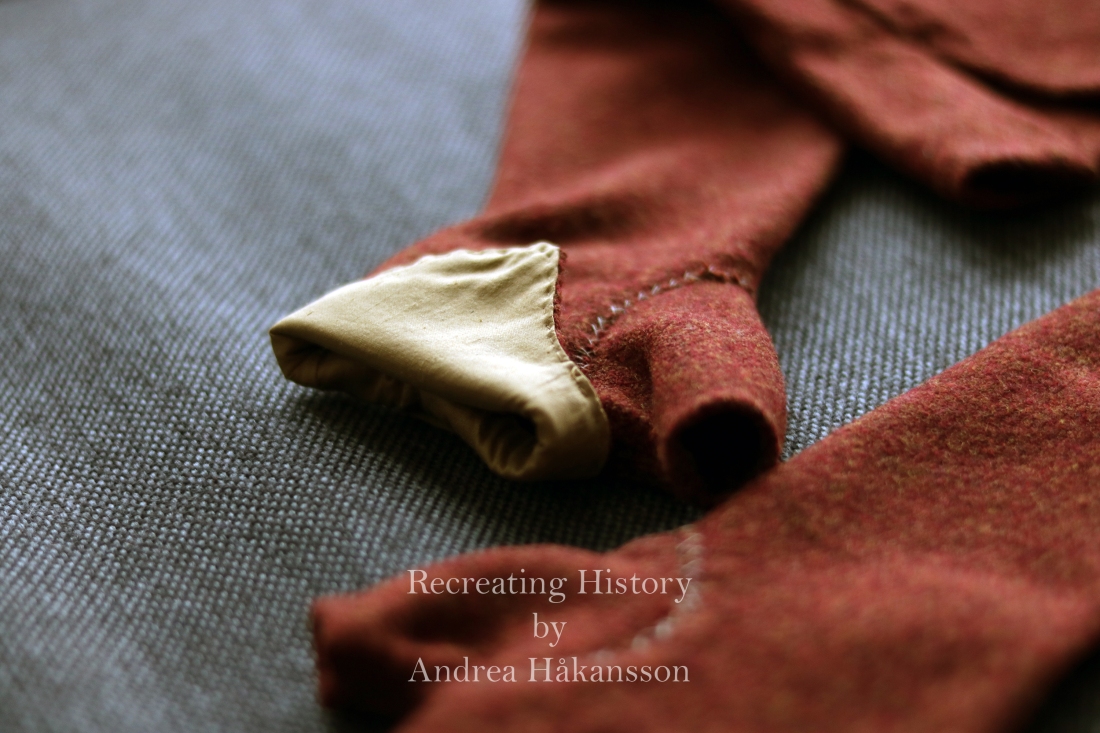
These mitts are based on both extant examples from Sweden and Europe, as well as paintings from the period and the social class I’m hoping to recreate. The main inspirations are the mitts shown here above as well as the Copenhagen Girls, which are portraits of a social class, girls and maids, close to what my plan for my costume is.
Fodret är av gyllene sidentaft som är fastsytt med tråd från tyget. Mina halvvantar är baserade på svenska och europeiska bevarade original, samt på koppartryck från Danmark som porträtterar kvinnor från ungefär samma folkliga mode som jag försöker efterspegla.
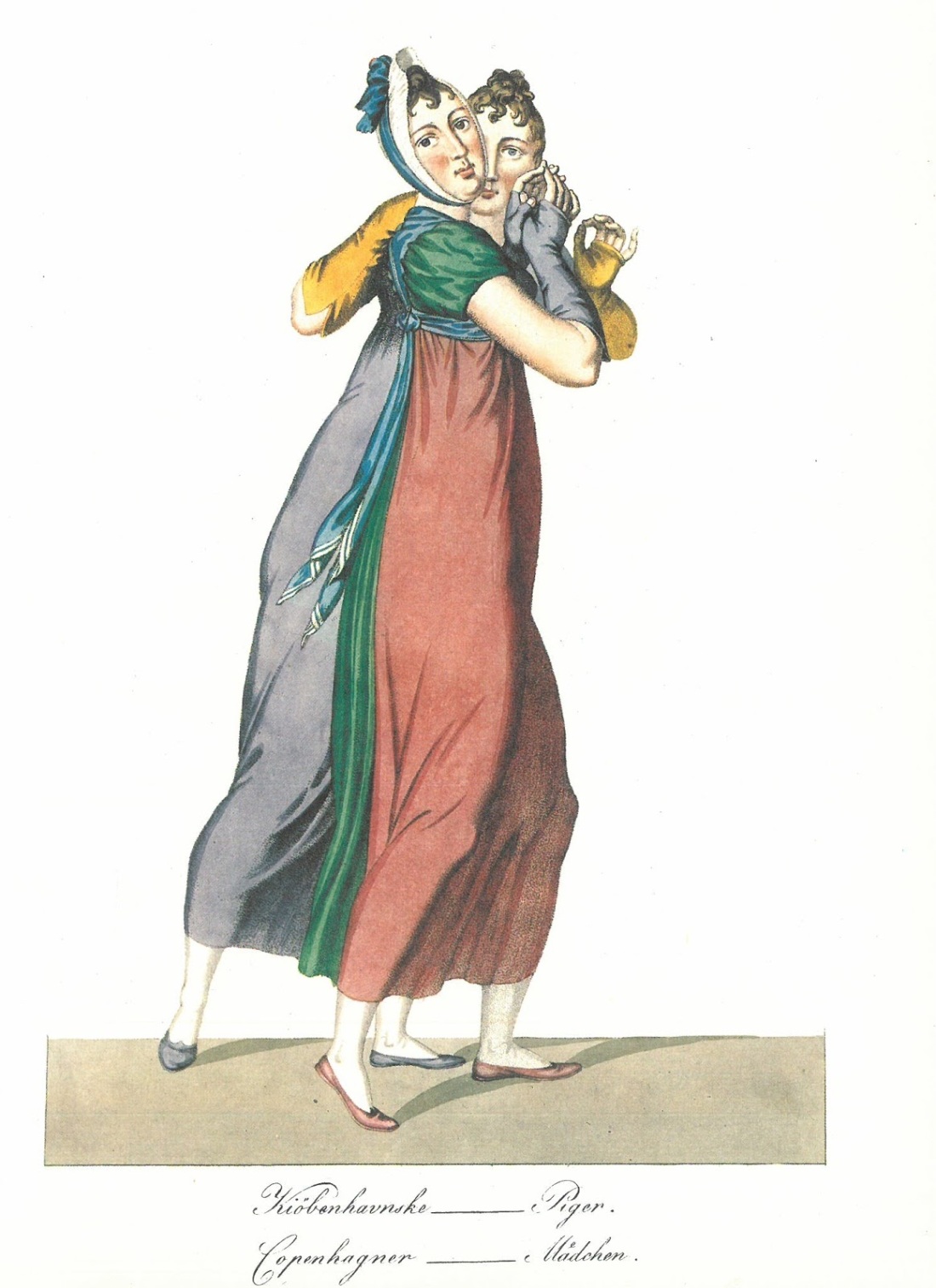
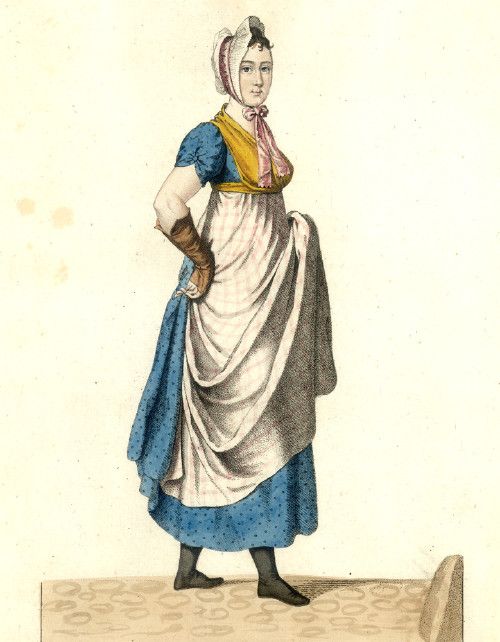
These three ladies have the mitts, and some very pretty dresses and accessories. They are, together with campfollowers from the period, my main inspiration for my costume.
Dessa tre kvinnor har halvvantar som ni kan se, och även mycket fina klänningar och accessoarer. De, tillsammans med kvinnlig tross från härläger är min främsta dräktinspiration.
En av anledningarna till att jag har varit dålig på att blogga det senaste året är för att jag tycker att det har tagit så mycket tid att skriva på både engelska och svenska. Nu har jag bestämt mig för att fokusera på den engelska texten och istället bara skriva kortare sammanfattningar på svenska. Detta för att majoriteten av de som läser min blogg inte har svenska eller andra nordiska språk som modersmål. Förhoppningsvis leder det till en ökad uppdatering från min sida. Vad tycker ni om denna förändring?



Superfina! Färgen är helt ljuvlig. För min del så stör det inte det minsta om större delen av texten i fortsättningen är på engelska, tillgänglighet är awesome. 🙂
LikeLike